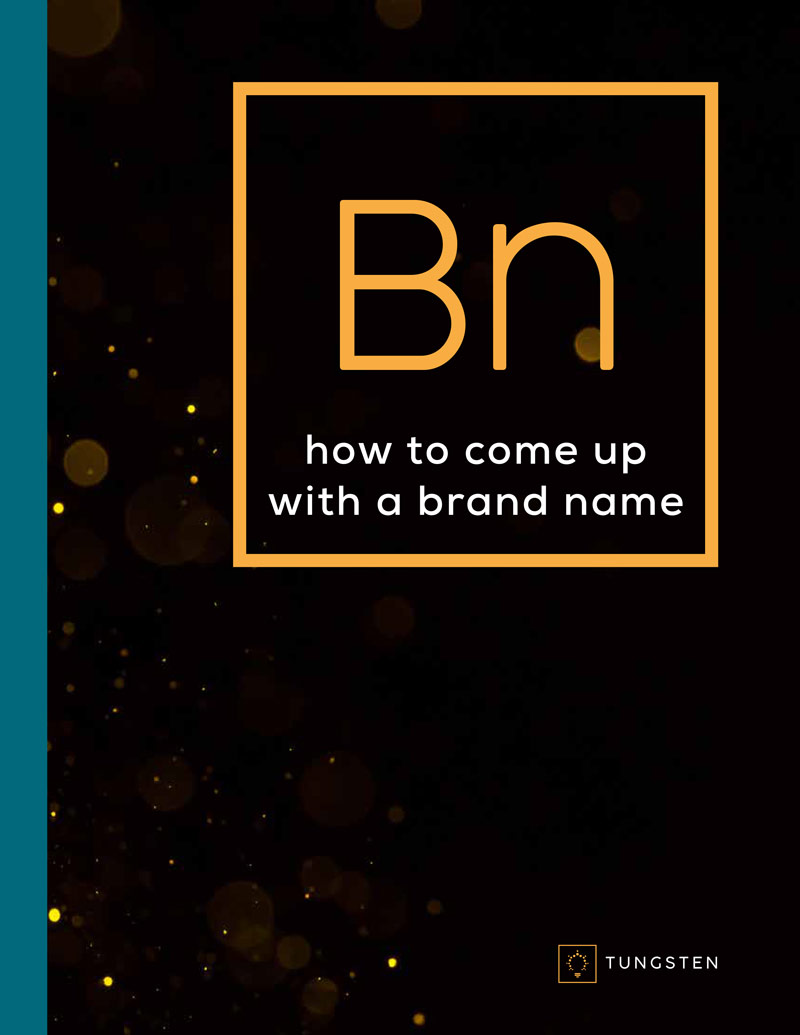Episode 025: Your brand is your promise! (What are you promising?)
Brilliant Branding Live Show Archives
Originally aired weekly August 2017 - August 2018 With host Phil Davis
Show Description
"Brilliant Branding" shines the spotlight, and provides valuable insights, into the most common, and frustrating company identity issues facing startups, entrepreneurs, consultants, and even established business owners. Topics address timely issues such as effective naming strategies, smart logo design, tips for trademarking, clear brand messaging, engaging social media and reputation management. We take a deep dive to uncover the "pivot point" of an organization, the "why" behind each business to help build a more clear, cohesive and compelling brand image.
Welcome, brand fans, to another episode of the Brilliant Branding Podcast! Today we’re talking about one of our favorite topics: Keeping your brand promise.
Have you ever had a flaky friend who promises to come to a party or an event or a trip and then never shows up? You know, that friend who habitually cancels plans… We all have that one! What ends up happening? You stop inviting them to things. You lose trust in them and you no longer consider them reliable. Eventually, your friendship with them starts to fade away and they become more of an acquaintance.
The same thing happens with customers and companies. Your brand promise is such a crucial element in creating and maintaining a solid company reputation. It starts with creating your promise, which sets an expectation for your customers. Are you the fastest? Do you provide the best customer service? Do you have the widest selection of products of anyone in your industry? Do you have the absolute best prices? After you’ve established that promise and given the customers an expectation for what doing business with you will be like, then you have to deliver. By doing this
So many companies fail on one or both parts of this process. As a result, they fail to establish and/or meet the expectations of their customers. In turn, they disappoint or even anger their customers. Their customers lose trust and the brand is damaged.
Of course, no company does this to themselves on purpose. Sometimes it’s because they’re struggling internally. However, a large percentage of companies who are failing to make and keep their promises don’t even fully realize they’re doing it.
If you’re left wondering whether or not you may be in this position, you’re in luck! We’ve created a lift of 5 of the most common mistakes to avoid when establishing and keeping your brand promise.
Mistake #1: Underpromising
Are you promising something bold and impressive or vague and weak? Take a look at your marketing materials. So many companies take the most valuable real estate in their marketing— usually their tagline or a few sentences in their marketing materials— to make meaningless, non-statement statements.
They’ll say things like, “Working on tomorrow’s promise today.” What does that even mean? “Envisioning a brighter future together”… Ok…? That’s great, but what should customers expect from your company? Can you see how ambiguous and pointless statements like these are?
One example we’ve repeated several times throughout the podcast is Fast Signs. Their tagline is More than Fast, More than Signs. Ok… So what are you? Signs and dairy products? Signs and ski equipment? Again, what’s the expectation? It’s not like Fast Signs isn’t a profitable company. It’s just… How much further ahead could they be if people knew what to go to them for in the first place? That’s a lot of missed opportunity… and money.
Instead: Create a clear, bold expectation for your customer. Let them know why they should choose you and be confident in your reasoning. Look at Wal-Mart as an example. “Always low prices. Always.” Wow! What a bold statement. And guess what? They’ve delivered on it for decades. Meanwhile, Target took the premium/ designer route. Kmart was left promising everything.
Mistake #2: Over-Promising
On the flip side of that coin, there are companies that way over-do it on promises to the point where it becomes exceedingly difficult to actually deliver. We just mentioned Kmart. They’re a great example of this. Rather than pick a niche and nail it, Kmart promised blue light specials while at the same time promising Martha Stewart premium products. Unlike WalMart, which went for the bargain image, or Target, which went for the upscale designer niche, Kmart sort of scrambled to appeal to both. As time went on, Kmart began to lose its market share. As their stores are closing everywhere, their new slogan has ironically become, “Life is ridiculously awesome!”.
They overpromised. Did they deliver on either? Maybe. But what really matters is whether or not they delivered in the eyes of their customers. When you promise things in too many directions, you dilute your promise and in turn, you dilute your own brand image.
HP is another example. Their slogan is “Keep reinventing.”. While the company has a long and rich innovative history, some argue HP hasn’t done much in the way of innovation for the past decade or so. Instead of unveiling new technologies, the company has spent the greater part of the past several years acquiring other companies. While it’s a great move that makes great business sense, why tout that you’re an innovator first and foremost when you’re not? It may be time for HP to do some soul-searching on that one. So, lesson learned. Don’t overpromise.
Instead: Align your brand promise with your current strengths. Make it actionable ad reasonable. It doesn’t have to be easy. It just has to be doable. Pick something that, given your company’s full focus and attention, you know you can deliver on. Then as long as you keep that goal in mind and consistently work toward it, you’ll never over-promise.
Mistake #3: Offering No Promise at All
Wouldn’t it be easier to just not promise anything at all? Set the bar low enough and you can easily step right over it, right? There’s only one problem. Customers know you’re setting the bar low when you don’t promise anything.
Imagine you’re looking for a plumber online. Your search yields three results. The first reads “Speedy Boy Plumbing: 24/7 plumbing for all of your plumbing emergencies. There in an hour or it’s free!” The next ad reads “Honest Abe Plumbing: Reliable, quality plumbers you can trust. A family-owned and operated business since 1979.” Now imagine the third listing reads “Main Street Plumbing: Commercial and residential plumbing. Call today for a quote.”
Which of those sounds good to you? In reality, it would probably depend on your current situation. More specifically, it probably depends on whether or not your plumbing issue is an emergency and what your budget is. Whatever it is, chances are you’d choose one of the first two and not the third. Why? Because the third hasn’t given you any reason to choose them! One has said they’re quick. The other has said they are reliable and provide quality service. The last one has said that they’re plumbers…
If you try to take the easy way out by not promising anything, you’re going to short-change yourself. You’re going to miss out on a ton of customers, whether or not you’re ever aware of it. You will simply be overlooked.
Instead: Pick something you know you can do better than your competitors. Do some soul searching here. If all of your competitors are saying they’re the fastest, that’s a perfect opportunity to position yourself as the highest quality. If everyone is claiming to have the highest quality, that’s your chance to say you have the best prices. You can be the most innovative, have the widest selection, offer a satisfaction guarantee, be the coolest, be the tastiest… So long as you can actually deliver on it, go for it. Stand out and own it.
Mistake #4: Promising That You Are Your Product
Some companies are great at making and keeping their promises because they’re merely promising that they provide a certain product or service. Their name, tagline, and message all point toward the same product or service. While it works great in the short term, it’s a terrible long-term strategy because it doesn’t allow you to pivot through changes in technology and methods of delivery.
As we’ve said before, identifying yourself solely based on your product or services reduces your company from a brand to a mere commodity. The fate of the company is then in lockstep with the fate of the product or service you sell. There have been a few notable case studies in the past several years that demonstrate the dangers of approaching branding in this way.
Toys R’ Us aligned themselves with Toys. It was literally in their name. Toys ARE us. We = Toys. It doesn’t get more product-aligned than that. Since Toys R’ Us hadn’t established a brand identity beyond their current product offerings, it became difficult to pivot as technology and delivery methods changed; namely that video gaming and virtual entertainment began to replace physical toys and that Amazon was able to deliver toys and virtual entertainment cheaper, easier, and sometimes even faster than a physical toy store. Toys R’ Us unintentionally hindered their ability to adapt to change and ultimately went out of business.
Radioshack is another example. Radios fell out of favor as well as all of the hardware that Radioshack was selling. There’s an argument to be made that Radioshack could have kept the name as a sort of cool nostalgic theme, but that’s not what did Radioshack in. Radioshack failed to adapt to new market needs and change their product offerings. The reasons you’d need to go to a radioshack became fewer and fewer. If you needed a cable splitter or a circuit board or a light-up piano, or a very narrow selection of laptop computers, for example, you could get them at Radioshack. Then again, you could also get them at Amazon without ever leaving your house.
CompUSA suffered a similar fate. So did Books a Million. See the common thread? They’re product-identified. So, if you’re branding your business, try to stay away from names and themes that lock you into your current product or service offering.
Instead: Align your brand with an attribute. Align it with your values. Don’t use your brand to tell people what you sell. Use it to tell people how you do business. Apple Computers Inc. made the subtle yet brilliant decision to drop the word “Computers” from their name. Why? So they could pave their way through innovation beyond the personal computer; to pave the way for the iPod, iTunes, iPad, iPhone, iWatch, and the app store. Instead of aligning with computers, Apple aligned its brand with elegant, intuitive design and innovation.
Aligning your brand around an attribute establishes the pivot point around which all of your future products and services can revolve while still delivering on your brand promise.
Mistake #5: Breaking your promise
For obvious reasons, this one is a big no-no. But let’s dive into a little more detail and highlight some subtle nuances to the consequences of breaking a promise as a brand.
Have you ever called a company that prides itself on customer service only to be placed on hold for half an hour, put through a robo-directory, and asked the same questions repeatedly? How does that make you feel? Frustrated, right? If that same company was promising the absolute best prices and best value, you might be a little more understanding. What’s a little inconvenience compared to all the money you’re saving, right?
Ah, but that’s not what they promised. They promised you great customer service. They gave you one expectation and one expectation only. Then they broke their promise. How does that make you feel? Can you trust that company going forward? If you hadn’t made your purchase with them yet, maybe you’d consider moving on to another company. After all, what would you have to lose?
When you break your promise, you break your customer’s sacred trust. You can spend years building your company’s reputation, but never forget that that reputation can be destroyed in seconds. Customers may forgive mistakes about things you never promised, but they’re less likely to forgive mistakes involving the very thing that led them to choose you in the first place. Break your promise to your customer, and you may never get that customer back.
Often times companies are unintentionally breaking their promise. They may be understaffed or under-resourced or they may just be unaware of what’s going on on the front lines. Other companies break their intentionally break their promises. L.L. Bean, for example, recently changed its century-old return guarantee.
Since 1912, the company stood behind the quality of its products so much that it offered a lifetime return gaurantee. If any of the products broke or wore out, the company offered a full refund. This policy relied heavily on customer honesty and unfortunately, not everyone was so honest. People started returning items once they were done wearing them. Others even purchased items from yard sales and returned them.
L.L Bean’s decision made a lot of sense from purely from an accounting perspective, but unfortunately, it upset a lot of their customers, many of whom came from multigenerational L.L. Bean-loyal families. To be fair, the company still offers a return policy for people who keep their receipts and meet other requirements.
Whether or not the policy will do long-lasting damage to L.L.Bean’s brand has yet to be seen. The takeaway here is just to consider the consequences of going back on a promise. So, whenever possible, try to avoid decisions that force you to have to take back what you’ve already told your customers you’ll do for them no matter what.
Instead: Avoid making promises you can’t keep. Don’t just think about what’s going on now. Think 100 years into the future. The more central your promise is to your company’s core identity, the more important it is that you keep your promise. When you do make a promise, keep it at all costs. If your promise is that you’ll deliver something on time, deliver it on time. Even if it means losing money on a sale by overnighting something, it beats losing a customer’s trust.
Likewise, if you promise quality and you can’t deliver a quality product or service in the allotted time, then disappoint your customer on speed. Don’t disappoint them on quality if that’s what you’ve promised. You can ask for forgiveness on something you didn’t promise way easier than for something you promised. Keep your promises and you’ll keep your customers.




